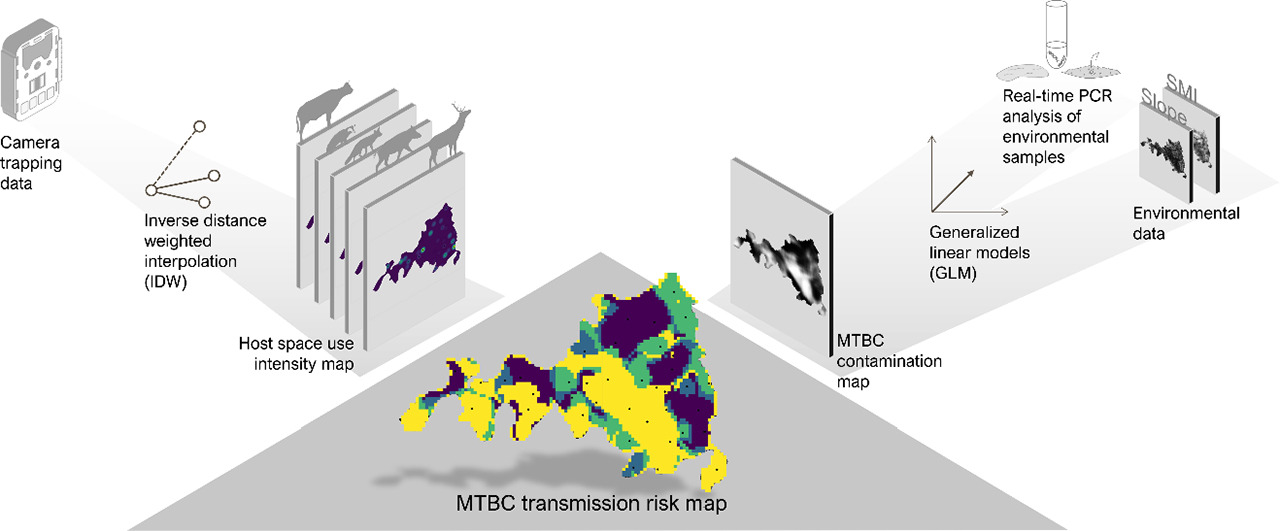A study by MED researchers reveals new approaches to quantify animal tuberculosis transmission risk
A study recently published in the scientific journal “Science of the Total Environment” revealed important findings about the transmission risk of Animal Tuberculosis (TB) in a multi-host system involving wild boar, deer, carnivores and domestic cattle in Portugal.
By combining maps of space use by hosts – interpolated from camera trapping – with molecular data on environmental contamination by bacteria from the Mycobacterium tuberculosis complex (MTBC), the study provides, for the first time, transmission risk maps, useful for identifying priority areas and direct efforts towards surveillance and control of animal tuberculosis. This work shows how host ecology and spatial patterns of MTBC occurrence influence the risk of animal tuberculosis transmission in Southern Portugal, where space sharing frequently occurs between wild and domestic species. The study also shows the need to include topographic and edaphic factors in models predicting the occurrence of MTBC. From this combined analysis of mapping the use of space by species and the presence of bacteria in these locations, it was demonstrated that wild boar (Sus scrofa) and deer (Cervus elaphus) more frequently use areas where there is a greater probability of MTBC bacteria occur, thus enhancing their transmission. In order to accurately estimate the spatial probability of TB transmission in multihost communities and identify specific hotspot locations that require intervention and surveillance to decrease transmission, it is imperative to match host ecology with environmental contamination.
This research was coordinated by researchers from the MED-Mediterranean Institute for Agriculture, Environment and Development, based at the University of Évora, and involved researchers from cE3c – Center for Ecology, Evolution and Environmental Changes, both R&D units belonging to the Associated Laboratory CHANGE – Institute for Global Change and Sustainability. It also involved the participation of IREC – Institute for Research in Game Resources from Spain.
The research was funded by the Fundação para a Ciência e Tecnologia, under a doctoral grant (SFRH/BD/146037/2019), the MOVERCULOSIS project (2022.06014. PTDC) and the COLOSSUS project (PTDC/CVT-CVT/29783/2017).
